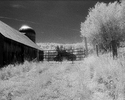Thomas Bertilsson
Member
I've looked over some negatives and decided to do a little testing, one of those things that can drive you nuts. I looked at the scan from an Xtol developed Tri-X and one from 5222 developed in ID-11 and the latter has more sharpness, better tone and just looks better on average. I looked at five different ones of the same scenes to compare under the same lighting conditions and to my eyes the 5222 looked better-so did Tri-X with HC-110. It's not that Xtol is that bad. On the contrary, it's rather good but just doesn't look as good as the others.
Broke down, it's probably a toss of the coin. They all do well but some look a bit better. I'll continue on with Xtol and see how things go next time.
I'm extremely surprised. But since you scan your negatives and I print mine on silver gelatin paper to look at results, I'd be surprised if we came to the same conclusion also.
The comparison to Double-X isn't really valid, since it's a different film. But your comparison to Tri-X in HC-110 is. To make sure you're comparing apples to apples, negatives of both types need to be processed to the same contrast. If the Xtol is processed to a lower contrast, you need to boost that contrast to get similar tonality, which would alter the way that grain looks. If a negative is much denser in the highlights, you will have bigger grain clumps making up the extra density in the highlights, which also increases grain. The only way to get a fair comparison is to process the negatives to identical contrast. That's one thing I might look into.
One roll isn't usually going to tell you what's going on. Often it takes a while to find the sweet spot with films and developers, for me it usually takes about 5 or six rolls to fully understand what's going on, in different lighting scenarios.
Finally, I don't know what scanner you use, but usually the more budget type scanners like the Epson flatbeds and such, don't have enough resolution to actually resolve the grain, meaning that you'd see an approximation of the grain. Usually the Nikon 9000 series, the Hasselblad/Imacon scanners, and most drum scanners will have enough (actual) resolution where you can actually see the grain.
Just some thoughts off the top of my head. But at the same time, if HC-110 works so well for you, maybe it's a good idea to just continue using that.





